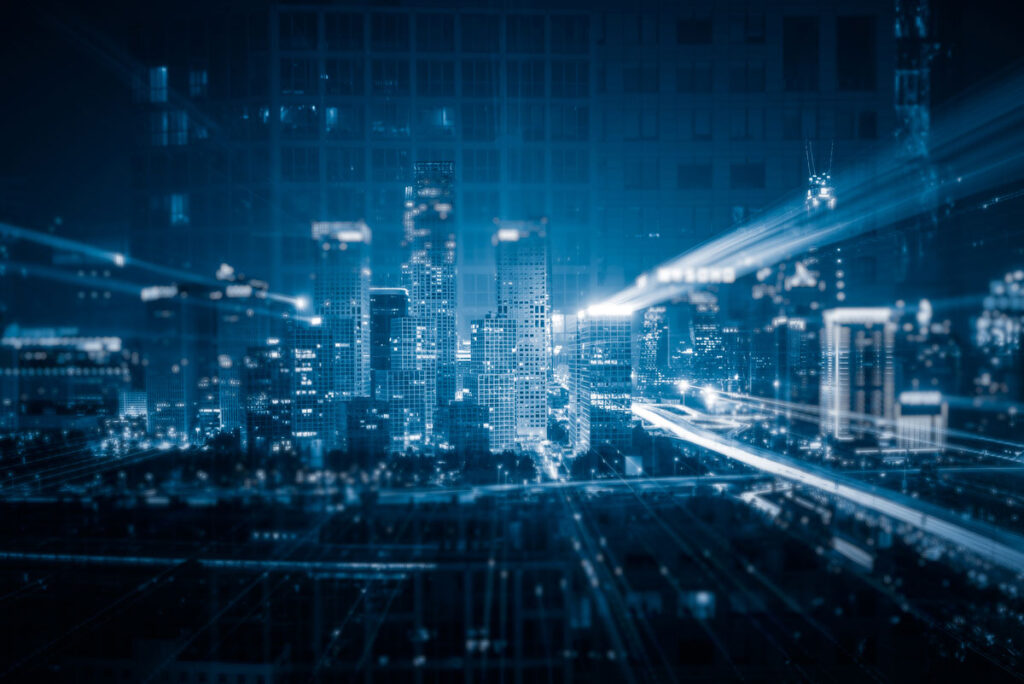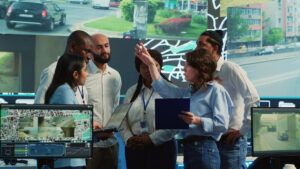Exclusive Neuroject Article: The Internet of Things (IoT) refers to the interconnected network of physical objects, often termed “things,” incorporating sensors, software, and various technologies. The primary objective is to facilitate the exchange of data among these devices and systems through internet connectivity. These devices span from commonplace household items to advanced industrial tools. Currently, there are over 7 billion connected IoT devices, and industry experts anticipate a surge to 10 billion by 2020 and a substantial growth to 22 billion by 2025.
In an Internet of Things (IoT) ecosystem, smart devices equipped with embedded systems, including processors, sensors, and communication hardware, play a pivotal role in collecting, transmitting, and responding to data from their surroundings. These IoT devices share the data they gather by connecting to an IoT gateway, functioning as a central hub where information can be sent. Before sharing, the data may undergo analysis on an edge device, allowing local processing to reduce the amount of data transmitted to the cloud, thereby minimizing bandwidth usage.
Inter-device communication is a common practice among these devices, enabling them to exchange information and act upon the received data. The devices are designed to perform most tasks autonomously, requiring minimal human intervention. However, individuals can engage with the devices, such as configuring them, providing instructions, or accessing the data they generate.
The selection of connectivity, networking, and communication protocols for these web-enabled devices is typically contingent on the specific applications of IoT being implemented.
Moreover, it leverages artificial intelligence and machine learning to enhance and streamline data collection processes. This integration of advanced technologies contributes to making data collection more efficient and dynamic within the IoT framework.
Table of Contents
Historical Context and Evolution
Since its inception, the Internet of Things (IoT) has transformed our interaction with the surrounding environment by linking commonplace physical objects to the Internet, enabling unparalleled monitoring and control capabilities.
1969: The inception of the Internet of Things is closely tied to the origins of the Internet itself, initially emerging as part of DARPA (Defense Advanced Research Projects Agency) in 1962 and evolving into ARPANET (Advanced Research Projects Agency Network) in 1969.
1980: During the 1980s, commercial service providers began facilitating public access to ARPANET, paving the way for the development of the modern internet. The foundational communication infrastructure for much of it relies on satellites and landlines. The concept of IoT dates back to the late 1980s, originating from the pioneering work of researchers at Carnegie Mellon University.
1991: In 1991, British entrepreneur Kevin Ashton, while at the Auto-ID Center, coined the term “Internet of Things.” Ashton proposed the utilization of radio frequency identification (RFID) and various sensors to facilitate the tracking and monitoring of physical objects, a concept that eventually laid the groundwork for the contemporary IoT.
1993: In 1993, Global Positioning Satellites (GPS) became operational, providing a stable and highly functional system with 24 satellites. This development, coupled with the deployment of privately owned commercial satellites, significantly enhanced the functionality of the Industrial Internet of Things (IIoT).
1999: The formal conceptualization of the Internet of Things did not occur until 1999, although early examples date back to the early 1980s. Notably, a Coca-Cola machine at Carnegie Mellon University served as one of the first instances of its application. Programmers would connect to the internet to check the availability and temperature of drinks in the machine before making a purchase.
Kevin Ashton, Executive Director of MIT’s Auto-ID Labs, officially coined the term “Internet of Things” during a 1999 presentation for Procter & Gamble. He envisioned a future where computers, independent of human input, could gather and manage information about physical objects, thereby reducing waste, loss, and costs.
2000: In the early 2000s, Kevin Ashton advocated for Radio Frequency Identification (RFID) as a crucial element for the IoT, particularly in inventory tracking. This concept gained traction, and by 2002-2003, major organizations like Walmart and the US Department of Defense embraced inventory tracking through RFID and its technologies.
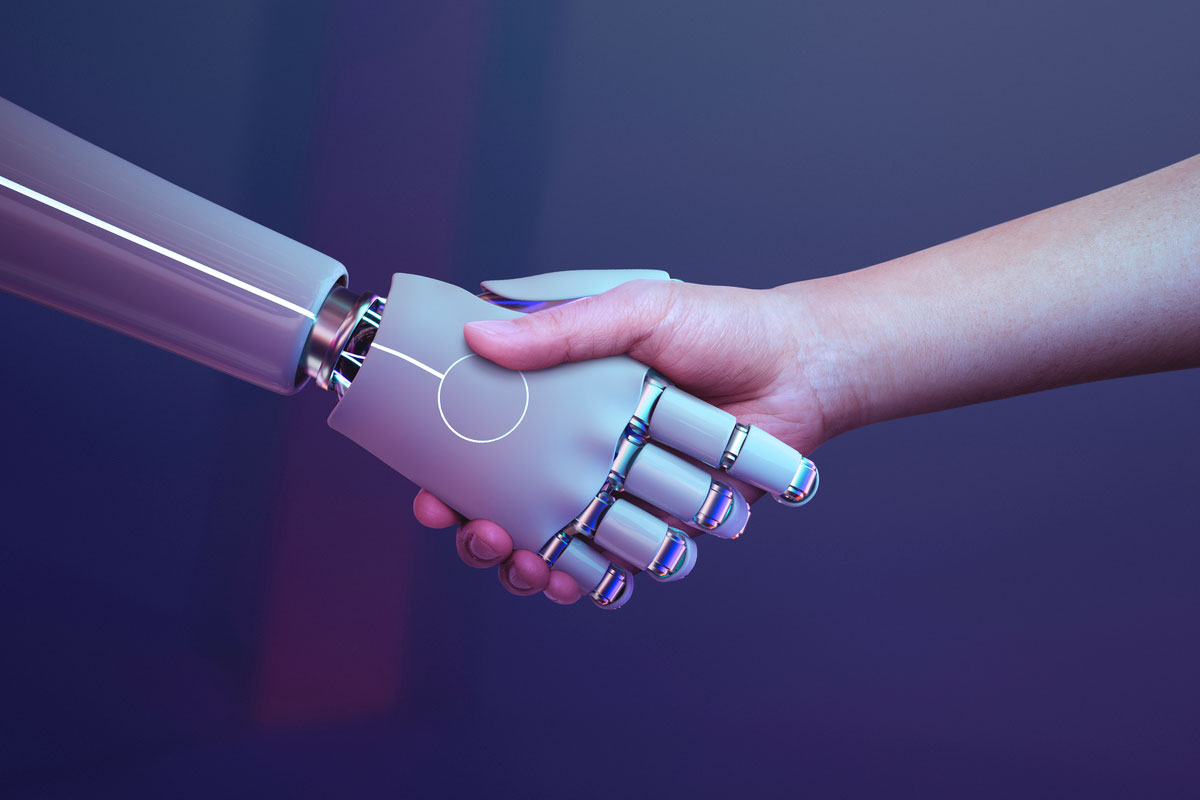
2003: Subsequently, it has undergone rapid expansion. The ZigBee Alliance, formed in 2003, played a pivotal role in advocating for the development and adoption of it. In 2009, the inaugural commercial IoT product, Xively, was introduced. Presently, IoT is integrated across diverse industries, spanning healthcare, manufacturing, retail, and smart homes.
2010: The Industrial Internet of Things emerged around 2010, extending the capabilities of the IoT with smart sensors and actuators integrated into industrial applications. The cloud’s extensive storage capacity, established in 2002, played a crucial role in realizing the modern version of it.
2012: The year 2012 marked a significant milestone when major internet service providers and web companies agreed to implement IPV6, expanding global internet address space exponentially. This development ensured that the IoT could accommodate the growing number of connected devices.
It evolved further with the advent of “smart cities,” employing its technologies to enhance energy efficiency, reduce waste, and optimize traffic management. Projects like “Smart City Switzerland,” initiated in 2012 by the Swiss Federal Office of Energy, exemplify the collaborative efforts of universities, businesses, and public administration to explore innovative urban solutions.
2013: By 2013, the IoT had become a multi-technology system incorporating the internet, wireless communication, micro-electromechanical systems (MEMS), and embedded systems. The scope of the IoT expanded to encompass diverse applications, from mobile phones to building maintenance to medical devices.
2015: The year 2015 witnessed the integration of smartphones into it, becoming essential communication tools monitored by marketing departments for targeted promotions. The healthcare industry embraced IoT with devices like smartwatches and smartphones tracking patients’ real-time health data.
Vehicles, including cars and trucks, became integral members, utilizing wireless networks to communicate with connected networks and extract real-time information about maintenance, driving conditions, and routes. Self-driving cars, introduced in the 1980s, joined it with cloud-based technologies enhancing their decision-making capabilities.
In summary, human neighborhoods have become interconnected as part of the Internet of Things, a dynamic and evolving ecosystem encompassing a wide array of technologies and applications. The IoT has revolutionized our daily interactions with the world, simplifying tasks, enhancing safety, and optimizing efficiency. As this technology evolves, its impact on our lives is poised to intensify. The future of it holds promise, with novel applications and use cases emerging continually.
Suggested article to read: What is IoT in Construction? Definition, Applications and Steps (2024)
Fundamental Concepts of IoT
The Internet of Things is a transformative paradigm that has revolutionized the way we connect, communicate, and interact with the world around us. At its core, it is based on a set of fundamental concepts that enable the seamless integration of physical devices, sensors, actuators, and other objects into the digital realm. Here are some key fundamental concepts of IoT:
- Connectivity:
- Communication Protocols: It devices communicate with each other and with central systems using various communication protocols such as MQTT (Message Queuing Telemetry Transport), CoAP (Constrained Application Protocol), and HTTP (Hypertext Transfer Protocol).
- Wireless Technologies: It relies heavily on wireless technologies like Wi-Fi, Bluetooth, Zigbee, and cellular networks to facilitate communication between devices.
- Sensors and Actuators:
- Sensors: It devices are equipped with sensors to collect data from the physical world. These sensors can measure various parameters like temperature, humidity, light, motion, and more.
- Actuators: These are devices that enable its systems to interact with the physical world by performing actions based on the data received. For example, turning on a fan when the temperature rises.
- Data Processing and Analytics:
- Edge Computing: Data processing is often performed at the edge of the network, closer to the devices generating the data. This reduces latency and bandwidth usage.
- Cloud Computing: Cloud platforms are used for storing, processing, and analyzing large volumes of data generated by IoT devices. Cloud services provide scalability and flexibility for its applications.
- Security:
- Authentication and Authorization: Security mechanisms such as secure authentication and authorization protocols are crucial to ensuring that only authorized entities can access and control IoT devices.
- Data Encryption: Encrypting data during transmission and storage protects it from unauthorized access, ensuring the privacy and integrity of the information.
- Interoperability:
- Standardization: Common standards and protocols enable interoperability between different IoT devices and platforms, fostering a more cohesive and efficient IoT ecosystem.
- Open APIs: Open Application Programming Interfaces (APIs) allow different devices and systems to communicate and share data seamlessly.
- Scalability:
- Device Management: As the number of IoT devices grows, effective device management becomes crucial. This involves tasks such as provisioning, updating firmware, and monitoring device health.
- Scalable Architectures: Its systems need to be designed with scalability in mind to accommodate the increasing number of connected devices and the growing volume of data.
- Power Management:
- Low Power Devices: Many IoT devices are constrained by limited power sources. Efficient power management strategies, such as low-power components and sleep modes, are essential for prolonging device battery life.
- Data Privacy and Ethics:
- Privacy Concerns: The vast amount of data generated by IoT devices raises concerns about individual privacy. Implementing robust privacy policies and practices is crucial to address these concerns.
- Ethical Use of Data: Its applications should adhere to ethical principles to ensure that data is used responsibly and for the benefit of individuals and society.
Understanding and integrating these fundamental concepts is essential for developing successful and secure IoT solutions that can unlock the full potential of this transformative technology.
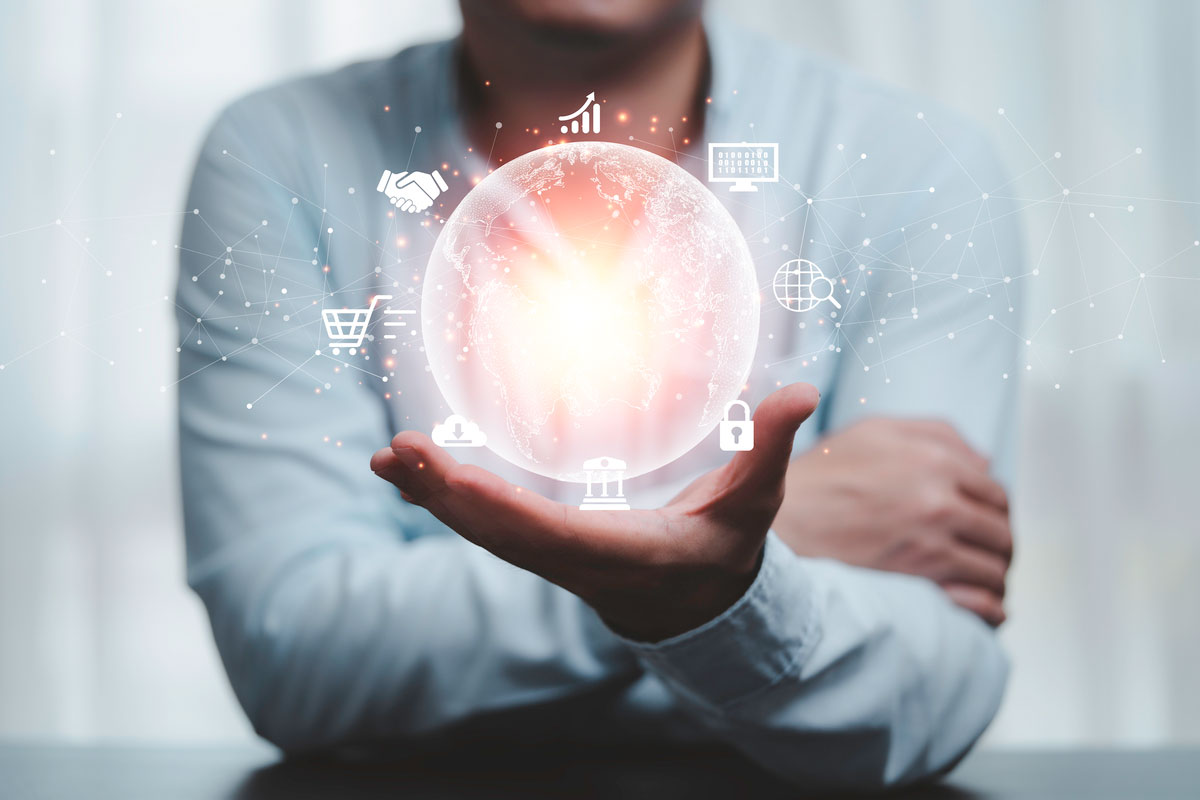
Key Technologies Driving IoT
The Internet of Things, alongside various technological advancements, is experiencing significant growth and entering the next phase of technological evolution. Its potential to redefine and reshape our lives is truly remarkable. The impact of IoT solutions became evident during the pandemic, particularly in the healthcare sector.
It plays a crucial role in delivering healthcare services to patients by eliminating the need for physical visits to healthcare professionals. Through real-time information sharing, its solutions streamlined communication, saving time and reducing the hassle for both patients and healthcare providers.
The healthcare industry, significantly affected during the pandemic, showcased the power of IoT solutions. However, it’s important to recognize that it is extending its influence across diverse industries. Several technologies are driving the development of it:
- Cloud Computing:
- The focus of IoT on real-time information sharing generates vast amounts of data.
- Cloud computing has become a key driving technology for it, offering efficient storage and processing capabilities.
- Cloud platforms are highly scalable, and continually developing to maximize their advantages for their applications.
- Blockchain:
- Combining its solutions with blockchain technology ensures reliable, authentic, and genuine data.
- For supply chain and logistics companies, IoT devices and blockchain provide a secure way to track goods with digital IDs, maintaining tamper-proof repositories.
- Integration of these technologies provides a competitive advantage, with its development companies facilitating seamless incorporation.
- Sensors:
- Sensors are integral to its solutions, enabling interactions between devices.
- Modern sensors go beyond basic functions, facilitating remote activities and contributing significantly to IoT solution development.
- IoT software development companies are offering innovative solutions to address contemporary challenges.
- Artificial Intelligence (AI):
- Its solutions, focused on connectivity and sensors, generate substantial data.
- Integration of AI with IoT enhances data analytics, allowing businesses to analyze vast datasets collected by IoT apps and devices and derive valuable insights.
The global pandemic demonstrated how it supported businesses across various industries, dispelling earlier uncertainties about its implementation. The discussed technologies—blockchain, AI, 5G, cloud computing—play pivotal roles in advancing global connectivity and driving IoT solutions. As its solutions gain momentum across industries, future advancements in these technologies will continue to propel it to new heights, contributing significantly to the next wave of digital transformation.
Suggested article to read: Smart Construction: Top 7 IoT Applications
IoT in Different Industries
The Internet of Things has become a transformative force across various industries, enhancing efficiency, improving decision-making processes, and enabling new business models. Here’s a glimpse into how IoT is making an impact in different sectors:
- Healthcare:
- Remote Patient Monitoring: Its devices enable continuous monitoring of patient’s vital signs, allowing healthcare providers to track and analyze health data in real-time.
- Smart Medical Devices: Wearable devices and sensors provide valuable health information, helping in disease management and preventive care.
- Asset Tracking: Hospitals use IoT for tracking and managing medical equipment, ensuring timely maintenance and reducing the risk of equipment shortages.
- Manufacturing:
- Predictive Maintenance: Its sensors on machinery collect data, enabling predictive maintenance and reducing downtime by addressing potential issues before they cause failures.
- Supply Chain Optimization: It helps in tracking and optimizing the movement of goods, reducing costs, and improving overall supply chain efficiency.
- Quality Control: Sensors on the production line monitor product quality in real-time, allowing for immediate adjustments and minimizing defects.
- Agriculture:
- Precision Farming: IoT devices collect data on soil moisture, weather conditions, and crop health to optimize irrigation, fertilization, and pest control.
- Livestock Monitoring: Wearable sensors on animals provide insights into their health, location, and behavior, aiding in better livestock management.
- Supply Chain Visibility: It ensures transparency in the agricultural supply chain, from farm to table, helping with traceability and quality assurance.
- Retail:
- Inventory Management: Its devices track inventory levels in real-time, reducing stockouts and overstock situations.
- Customer Experience: Smart shelves and beacons enhance the in-store experience by providing personalized offers and recommendations based on customer preferences and behavior.
- Supply Chain Efficiency: IoT enables retailers to optimize their supply chains, from warehouse management to transportation logistics.
- Smart Cities:
- Traffic Management: IoT sensors monitor traffic flow, helping to optimize traffic signals and reduce congestion.
- Waste Management: Smart bins equipped with sensors signal when they need emptying, optimizing waste collection routes.
- Energy Efficiency: It contributes to energy conservation by monitoring and controlling street lighting, heating, and cooling systems in public spaces.
- Energy:
- Smart Grids: IoT helps in creating intelligent energy grids that monitor and manage electricity distribution efficiently.
- Asset Monitoring: Sensors on critical infrastructure, such as power plants and pipelines, provide real-time data for predictive maintenance and safety.
- Energy Consumption Optimization: IoT devices in homes and businesses enable better management of energy consumption, contributing to sustainability goals.
- Transportation and Logistics:
- Fleet Management: IoT sensors on vehicles track location, fuel consumption, and maintenance needs, optimizing fleet operations.
- Cargo Monitoring: Sensors provide real-time information about the condition of goods during transit, ensuring proper handling and reducing losses.
- Predictive Analytics: IoT supports predictive maintenance for vehicles and infrastructure, minimizing downtime and enhancing safety.
These examples illustrate how it is reshaping industries by providing actionable insights, improving efficiency, and creating new opportunities for innovation. As technology continues to advance, the integration of IoT is likely to deepen, further transforming the way businesses operate across various sectors.

Challenges and Concerns in IoT
For more than twenty years, the Internet of Things (IoT) has revolutionized industries by providing the means for businesses and consumers to remotely monitor, analyze, and control devices. The applications of IoT continue to expand, with billions of connected devices now in use worldwide.
Despite opening up new possibilities, IoT has introduced challenges for developers, manufacturers, and customers. While many of these challenges have persisted since the inception of it, they have become more prominent as the technology becomes more widespread and accessible.
The incorporation of connectivity into devices has become simpler than ever. However, each new IoT application must confront or disregard similar challenges. Many manufacturers remain unaware of how contemporary IoT technologies can address these challenges. In this discussion, we will explore the primary challenges facing today and examine the technologies that can mitigate them.
- IoT Security:
- Challenge: IoT devices have been susceptible to cyber attacks, leading to instances like the Mirai botnet. Limited power supply on devices necessitates efficient data transmission, often at the expense of robust security measures.
- Solution: Cellular IoT, with features like SIM card authentication and remote firmware updates, addresses security concerns. Providers like emnify offer additional security through virtual private networks (VPNs).
- Coverage:
- Challenge: IoT devices require network connectivity and the choice of connectivity solution limits deployment locations.
- Solution: Technologies like cellular, Low Power Wide Area Networks (LPWANs), and satellite connectivity provide wide coverage, allowing IoT devices to operate within a few miles of network infrastructure.
- Scalability:
- Challenge: As IoT businesses scale, managing multiple connectivity solutions for different regions becomes overwhelming.
- Solution: Global solutions, such as enmity, create agreements with carriers worldwide, enabling devices to connect to numerous networks with a single SIM card.
- Interoperability:
- Challenge: The diverse configurations of IoT tech stacks create compatibility issues between devices and solutions.
- Solution: Most IoT stack components are interchangeable, promoting versatility. The industry trend is to simplify integration for greater interoperability.
- Bandwidth Availability:
- Challenge: Radio Frequency (RF) bandwidth, a finite resource, can face interference when devices nearby use the same frequencies.
- Solution: Mobile Network Operators (MNOs) license RF spectrum segments, reducing interference. Technologies like Narrowband IoT and the upcoming 5G offer more efficient bandwidth use.
- Limited Battery Life:
- Challenge: IoT devices often have small batteries to maintain compact size, limiting their use cases.
- Solution: New networking technologies like NB-IoT and LTE-M incorporate power-saving features, extending battery life. Specialized its routers and gateways also help minimize power consumption.
- Remote Access:
- Challenge: The type of connectivity influences access to IoT devices, impacting support and maintenance costs.
- Solution: Cellular connectivity provides the necessary data throughput for efficient updates and secure remote access through VPNs, reducing the need for on-site visits.
In navigating these challenges, IoT technologies continue to evolve, offering innovative solutions and driving the ongoing transformation of industries.
Suggested article to read: The Ultimate Guide to IoT Sensor in 2024
Regulatory Landscape
The regulatory landscape of the Internet of Things (IoT) is a complex and evolving framework that aims to ensure the responsible deployment and use of its technologies. As its applications become more widespread across various industries, regulators are grappling with the need to balance innovation with privacy, security, and ethical considerations. Here are key aspects of the regulatory landscape of IoT:
- Data Privacy and Protection:
- General Data Protection Regulation (GDPR): In the European Union, the GDPR sets strict guidelines for the collection, processing, and storage of personal data. Companies deploying IoT devices in the EU must comply with these regulations to safeguard user privacy.
- California Consumer Privacy Act (CCPA): In the United States, California’s CCPA grants consumers certain rights regarding their personal information. IoT manufacturers and service providers must ensure compliance with these regulations to avoid legal consequences.
- Security Standards:
- NIST Cybersecurity Framework: The National Institute of Standards and Technology (NIST) in the United States provides a framework for improving cybersecurity. While not specific to it, its principles are often applied to ensure the security of IoT devices and networks.
- ENISA Guidelines: The European Union Agency for Cybersecurity (ENISA) offers guidelines and recommendations to enhance the security of IoT, including risk management and incident response.
- Telecommunications Standards:
- 5G Regulations: The deployment of 5G networks, crucial for supporting the massive connectivity requirements of IoT, is subject to regulatory scrutiny. Governments and regulatory bodies set standards and allocate spectrum for 5G deployment.
- Spectrum Allocation: Regulators play a key role in allocating radio frequency spectrum for various IoT applications. Efficient spectrum management is crucial for preventing interference and ensuring the reliability of IoT devices.
- Industry-Specific Regulations:
- Healthcare: IoT devices in healthcare are subject to regulations such as the Health Insurance Portability and Accountability Act (HIPAA) in the U.S., which mandates the protection of patient health information.
- Automotive: The automotive industry faces regulations ensuring the safety and security of IoT-enabled vehicles. These may include guidelines for autonomous driving and data protection.
- Product Certification and Compliance:
- CE Marking (Conformité Européenne): In the EU, the CE marking indicates that a product complies with relevant safety and environmental protection standards. Its devices must undergo testing and certification to receive the CE mark.
- FCC Certification: In the United States, the Federal Communications Commission (FCC) certification is required for devices that emit radiofrequency energy. This includes many IoT devices that use wireless communication.
- Ethical Considerations:
- AI Ethics Guidelines: As IoT devices often incorporate artificial intelligence (AI), ethical guidelines for AI are relevant. Organizations like the European Commission and IEEE provide ethical principles for the development and use of AI.
- Ethical AI Impact Assessment: Some regulatory discussions focus on the development of frameworks for conducting impact assessments to evaluate the ethical implications of deploying its systems.
- International Cooperation:
- ISO Standards: The International Organization for Standardization (ISO) develops standards that address various aspects of IoT, including security, interoperability, and data management. These standards facilitate international cooperation and consistency.
- Global Privacy Laws: As IoT devices operate globally, compliance with privacy laws across different jurisdictions is crucial. Regulators are increasingly collaborating to establish harmonized approaches to data protection and privacy.
The regulatory landscape of it is dynamic, reflecting the rapid pace of technological advancements. Governments, standardization bodies, and industry stakeholders continue to collaborate to adapt regulations to the evolving challenges posed by IoT, striking a balance between innovation and ensuring the rights and safety of individuals and organizations.
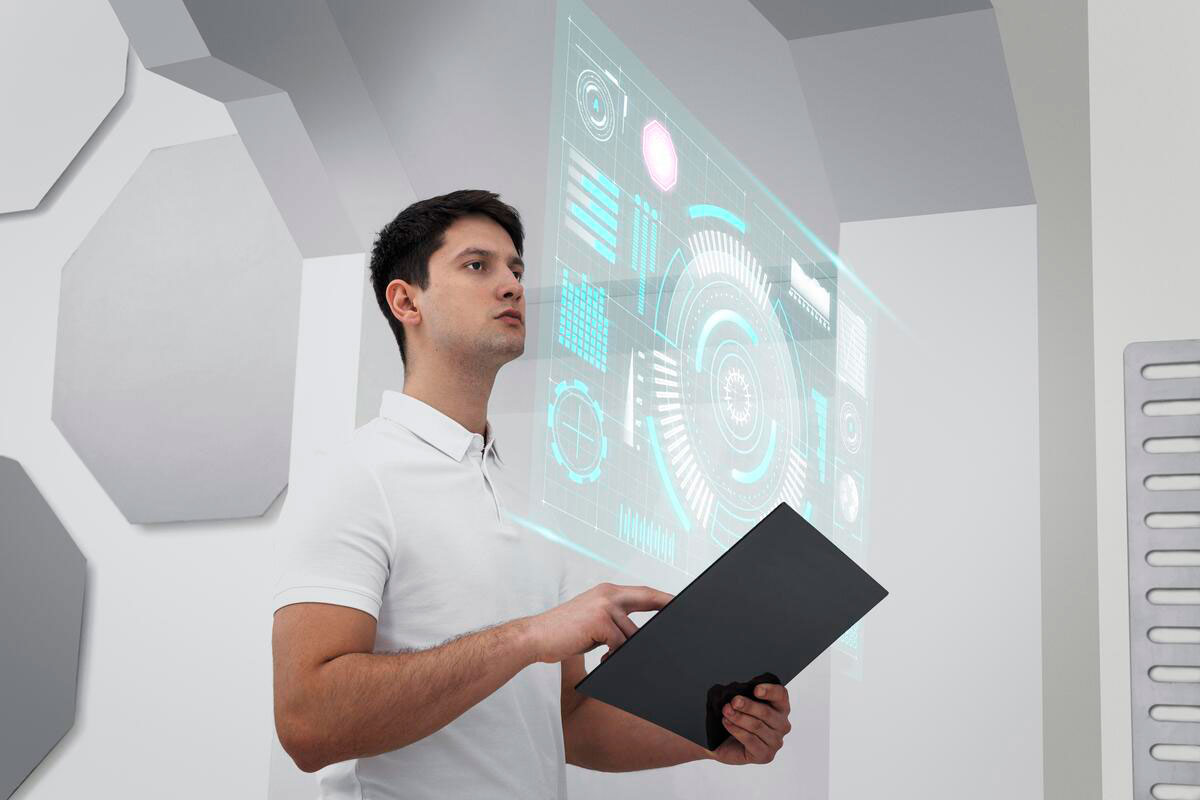
Future Trends in IoT
As we approach the conclusion of 2024, the global network of interconnected tools, toys, devices, and appliances forming the Internet of Things (IoT) is anticipated to comprise over 207 billion devices. This projection signifies a continued expansion of IoT applications beyond traditional computers and smartphones, encompassing a diverse range of items, from everyday toothbrushes to heavy industrial machinery. Notably, these connected devices are evolving into smart entities infused with artificial intelligence (AI), capable of autonomous decision-making.
The widespread adoption of it by businesses worldwide and the increasing prevalence of wearables and connected products in individuals’ lives indicate an ongoing trend that shows no signs of slowing down. As we progress into 2024, the boundary between the physical and digital realms continues to blur.
- IoT Security and Privacy:
- As the number of connected devices escalates, the risk of cyber-attacks rises. Anticipated AI-powered threats in 2024 underscore the importance of ensuring robust security measures, especially in an era marked by remote and distributed workforces. Building trust in digital and AI-driven environments necessitates prioritizing security and privacy in the development of networks involving smart devices.
- IoT in Healthcare:
- In the healthcare sector, its devices play a pivotal role in remotely monitoring patients, aiding in diagnostics, collecting research data, and advancing new treatments. With an aging population, solutions like virtual hospitals, where patients are electronically monitored from home, become crucial. The integration of generative AI with connected healthcare devices is foreseen in 2024, transforming patient data into natural language reports. The predicted growth of the IoT healthcare market reinforces its significance, expected to reach $150 billion this year and forecasted to reach $289 billion by 2028.
- AI-Augmented IoT (AIOT) and Convergence:
- IoT technology is converging with AI and machine learning systems, leading to the emergence of intelligent devices capable of decision-making. As thousands of these devices collaborate, establishing protocols for harmonious interactions and secure data sharing becomes a priority in 2024. This convergence not only fosters innovation but also introduces intriguing gadgets and technologies.
- Generative AI in Wearables:
- Wearable devices in 2024 are expected to incorporate generative AI, particularly large language models. Smartwatches and fitness trackers empowered by this technology are already entering the market, serving as personal assistants or fitness coaches. This shift could potentially redefine the role of traditional AI assistants like Siri and Alexa on wearables.
- Edge Computing Meets AI and 5G:
- Edge Computing, analyzing data closer to its source, will gain prominence in 2024, facilitated by the ongoing rollout of 5G networks. Integration with AI enhances the autonomy of edge devices, leading to increased adoption and innovative applications, particularly in scenarios like autonomous vehicles.
- Retail IoT:
- Retail extensively adopts it for inventory systems, footfall tracking, automated checkouts, and marketing devices. While not every initiative succeeds, the overall spending on IoT in retail is projected to rise from $28.14 billion to $177.9 billion by 2031. Retailers recognize smart devices as essential for understanding and enhancing customer experiences.
- Sustainable IoT and the Circular Economy:
- Sustainability and reusability take center stage in 2024, with its sensors monitoring energy efficiency, optimizing inventory and supply chains, and contributing to waste management. The integration of its technology aids in creating a more environmentally conscious approach to resource usage.
- Vehicle-to-Vehicle (V2V) Communications:
- In the automotive sector, vehicle manufacturers leverage V2V communications to enhance safety, reduce maintenance costs, and minimize carbon footprints. Sharing real-time data among vehicles optimizes driving conditions, showcasing the effectiveness of networked communication systems.
- IoT and Digital Twins:
- Digital twins, virtual models replicating objects or systems, find diverse applications enabled by it. Real-time data from IoT technology enhances the accuracy of these models, contributing to applications such as optimizing city infrastructure planning. The deployment of digital twins across various innovative use cases is anticipated to grow in 2024.
- Brain-Computer Interfaces:
- Wearables in 2024 may explore the realm of brain-computer interfaces, allowing devices to interpret brain signals for thought-controlled operations. While this concept may seem futuristic, ongoing experiments and trials by companies like Neuralink indicate a growing interest in leveraging such technology.
In summary, the trajectory of it in 2024 points toward a future where the integration of AI, sustainable practices, and innovative applications continues to shape the way we interact with the digital and physical worlds.
Case Studies
Case studies in the IoT industry showcase real-world applications of Internet of Things technologies across various sectors, highlighting their impact on efficiency, innovation, and business outcomes. Here are a few examples:
- Smart Agriculture:
- Case Study: John Deere’s Precision Farming
- Overview: John Deere, a leading agriculture equipment manufacturer, implemented it for precision farming. Sensors on tractors collect data on soil health, crop conditions, and weather patterns.
- Outcome: Farmers receive real-time insights, enabling precise decisions on irrigation, fertilization, and planting. This has led to increased crop yields, reduced resource usage, and improved overall farm productivity.
- Healthcare:
- Case Study: Philips Healthcare
- Overview: Philips implemented it in healthcare through connected medical devices, wearables, and telehealth solutions. For example, IoT-enabled patient monitors transmit real-time health data to healthcare providers.
- Outcome: Improved patient care with timely intervention, reduced hospital readmissions, and enhanced remote patient monitoring capabilities. This has proven crucial, especially in managing chronic conditions and ensuring patient well-being.
- Smart Cities:
- Case Study: Barcelona’s Smart City Initiatives
- Overview: Barcelona integrated IoT technologies to enhance urban services. Smart streetlights, waste management, and parking systems were implemented for efficient city operations.
- Outcome: Reduced energy consumption, optimized waste collection routes, and improved traffic management. Citizens also benefit from enhanced public services, contributing to a more sustainable and livable urban environment.
- Industrial IoT (IIoT):
- Case Study: Predictive Maintenance at Rolls-Royce
- Overview: Rolls-Royce incorporated IoT sensors in aircraft engines to enable predictive maintenance. Real-time data on engine performance and wear are transmitted for analysis.
- Outcome: Proactive maintenance scheduling, minimizing unplanned downtime, and extending the lifespan of aircraft engines. This has resulted in significant cost savings for both the airline industry and Rolls-Royce.
- Retail:
- Case Study: Amazon Go
- Overview: Amazon Go introduced it in retail with cashier-less stores. IoT sensors and cameras track customers and items, automating the checkout process.
- Outcome: Streamlined shopping experience, reduced queues, and improved inventory management. The success of Amazon Go has influenced the retail industry to explore it for enhancing customer experiences.
- Energy Management:
- Case Study: Enel’s Smart Grids
- Overview: Enel, a global energy company, implemented IoT in its smart grids. Sensors and automation technologies optimize energy distribution and monitor grid health.
- Outcome: Improved energy efficiency, faster response to outages, and integration of renewable energy sources. Enel’s smart grid initiative contributes to a more resilient and sustainable energy infrastructure.
- Logistics and Supply Chain:
- Case Study: Maersk’s IoT-enabled Shipping Containers
- Overview: Maersk, a global shipping company, implemented IoT in its shipping containers. Sensors provide real-time data on location, temperature, and humidity.
- Outcome: Enhanced supply chain visibility, improved cargo safety, and optimized shipping routes. This has resulted in more reliable deliveries and better management of perishable goods.
These case studies illustrate the diverse applications across industries, showcasing how organizations leverage connected devices and data analytics to drive operational efficiency, improve decision-making, and create innovative solutions that positively impact their business and the broader ecosystem.
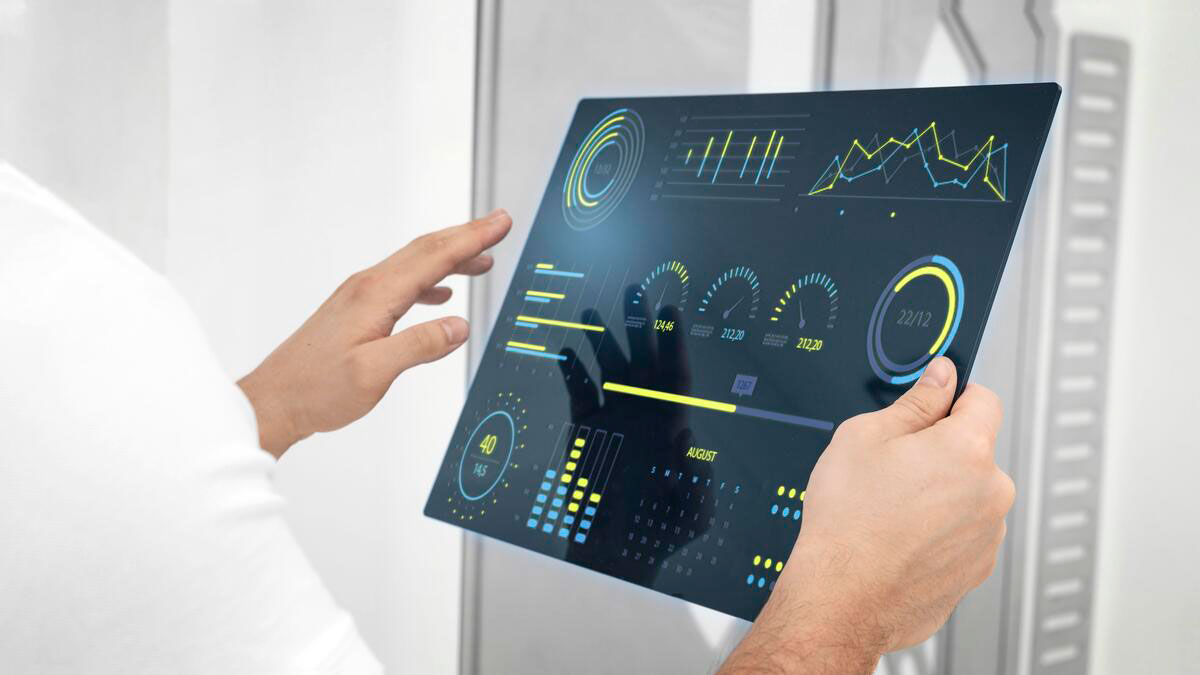
Conclusion
In conclusion, the historical context and evolution of the Internet of Things (IoT) reveal a remarkable journey from its early conceptualization in the 1960s to its current state as a pervasive and transformative force. Its roots trace back to the foundations of the Internet, with significant milestones such as the coining of the term by Kevin Ashton in 1999.
The evolution of IoT has been marked by technological advancements and key developments in connectivity, sensors, data processing, security, interoperability, scalability, power management, and ethical considerations. Understanding these fundamental concepts is crucial for developing successful and secure IoT solutions that unlock the full potential of this transformative technology.
Despite the tremendous growth and positive impact, its landscape faces challenges and concerns. Security remains a top priority, and addressing issues related to coverage, scalability, interoperability, bandwidth availability, limited battery life, and remote access is essential for the continued success of its implementations. Ongoing advancements in IoT technologies offer innovative solutions to navigate these challenges.
The regulatory landscape of IoT is evolving to address privacy, security, and ethical considerations. Regulations such as GDPR, CCPA, NIST Cybersecurity Framework, and industry-specific standards contribute to responsible IoT deployment.
Looking ahead, future trends point towards AI-augmented IoT, IoT in healthcare, convergence with edge computing and 5G, retail IoT, sustainable IoT practices, vehicle-to-vehicle communications, digital twins, brain-computer interfaces, and the ongoing convergence of the physical and digital worlds.
As we move into the future, the promise of it is vast, with novel applications and use cases continually emerging. The integration of AI, sustainable practices, and innovative technologies is set to deepen, shaping a future where it continues to revolutionize the way we interact with the digital and physical realms. The ongoing evolution of IoT holds the potential to create a more connected, efficient, and sustainable world.
Resources:
TS2 Space | Data Versity | Medium | emnify | Forbes | Oracle | Tech Target | IBM | McKinsey & Company | ZDNet | Cisco
For all the pictures: Freepik

